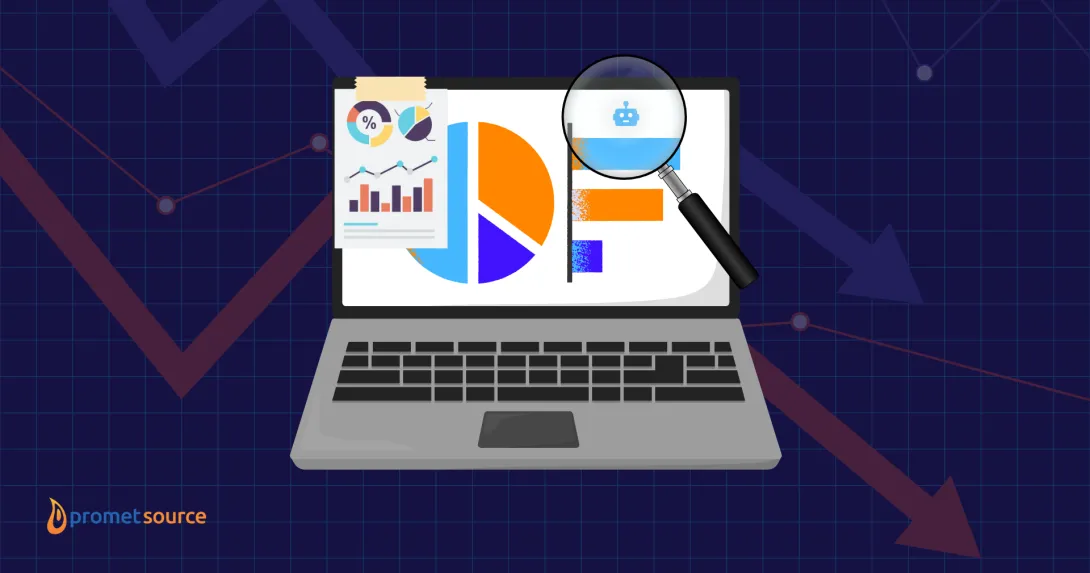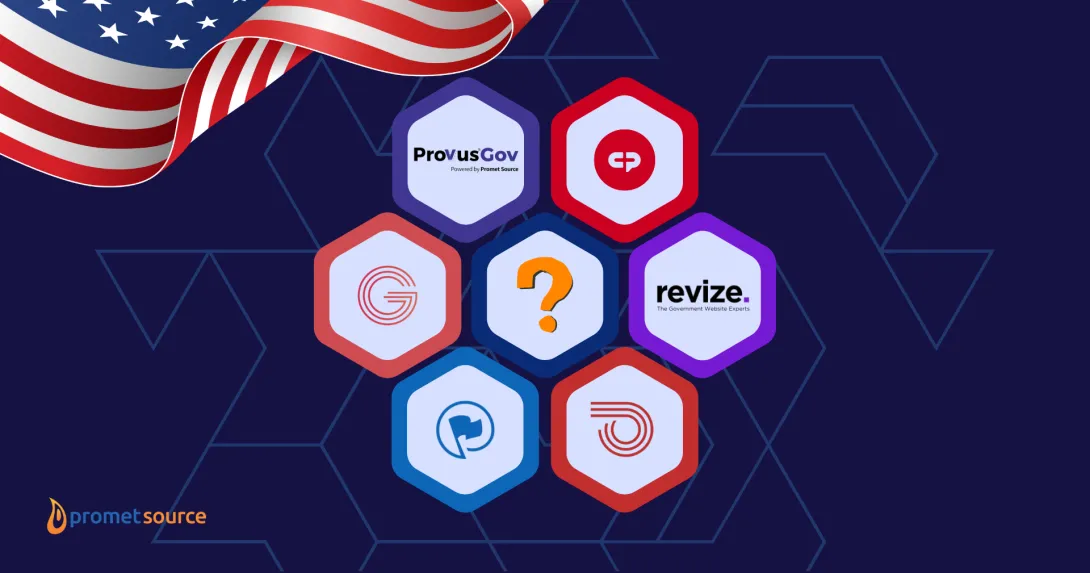Choosing the Best Content Management System for Local Government

Table of Contents
Takeaway: Get a practical, step-by-step approach for small to mid-sized cities and counties considering a transition from proprietary to open-source content management systems. This guide offers a straightforward decision-making framework, practical insights, and actionable advice to help you evaluate your current needs and make an informed choice about your website's future.
Many small and mid-sized government entities are still using proprietary platforms, completely missing out on the benefits of open source.
Here's why you might consider making the switch:
- Cost-effectiveness: Open-source solutions often offer significant long-term savings.
- Flexibility and customization: Adapt your website to your specific needs without vendor restrictions.
- Scalability: Grow your digital services without being constrained by licensing tiers.
- Community support: Benefit from continuous improvements and a vast knowledge base.
- No vendor lock-in: Maintain control over your data and the freedom to choose service providers.
GET YOUR FREE CMS MIGRATION CONSULTATION
Let's get started.
Assessing your current local government CMS needs
Moving away from proprietary systems can be nerve-wracking. After all, due to vendor lock-in, your website and team are completely dependent on one vendor.
But it's not too late to transition to open-source. In fact, we highly recommend doing so as your website is smaller compared to websites of cities and counties with large populations.
To evaluate your current situation and needs, I have two forms for you. These will help pinpoint areas where your proprietary CMS may fall short and identify key requirements for your future platform.
Related: Comparing Six Government CMS Platforms: A Practical Overview →
Common pain points with proprietary systems
Review this list and check off any issues you're experiencing:
| Issue | Yes | No |
|---|---|---|
| High ongoing licensing costs | ||
| Vendor lock-in concerns | ||
| Limited customization options | ||
| Difficulty integrating with other systems | ||
| Slow or unresponsive vendor support | ||
| Inability to easily add new features or functionality | ||
| Cumbersome content management process | ||
| Poor mobile responsiveness | ||
| Difficult to meet accessibility standards | ||
| Limited scalability as your needs grow |
Self-assessment: Essential features for local government websites
Rate the importance of these features for your organization (1 = not important, 5 = critical):
| Feature | Rating |
|---|---|
| Intuitive content management interface | |
| Robust security and compliance tools | |
| Flexible design capabilities | |
| Built-in accessibility features | |
| Integration with other government systems | |
| Multi-site management from a single platform | |
| Advanced search functionality | |
| Event calendar | |
| Reservation system | |
| Document management and versioning | |
| Social media integration | |
| Email newsletter capabilities | |
| Mobile-responsive design | |
| Analytics and reporting tools | |
| Robust content governance capabilities |
This information will guide your evaluation of open-source CMS options and help ensure you choose a platform that meets your organization's requirements.
Decision-making framework
When considering a transition to an open-source CMS, you evaluate multiple factors. This framework will guide you through key considerations to make an informed decision.
Step 1: Evaluate your current CMS costs
List your annual expenses for:
- Licensing fees
- Hosting costs
- Support and maintenance contracts
- Custom development or feature requests
- Other costs you have with your current CMS
Total these costs to establish a baseline for comparison with open-source options.
Step 2: Assess your in-house technical capabilities
Rate your team's expertise in:
- Web development (HTML, CSS, JavaScript etc.)
- Python or other relevant programming languages
- Server management and hosting
Then determine if you have resources for:
- Regular software updates and security patches
- Custom module and/or custom API development
- Troubleshooting and maintenance
If your team lacks certain skills or you have limited capacity, factor in potential training classes or outsourcing costs.
Related: 5 Essential Cybersecurity Questions to Ask IT Vendors →
Step 3: Determine your scalability needs
- Project your website growth over the next 2-5 years:
- Expected increase in web traffic
- New features or services you plan to offer online
- Potential for multi-site management needs
Assess if your current CMS can handle this growth without significant additional costs.
Step 4: Consider integration requirements
- List current integrations (e.g., payment gateways, GIS systems)
- Identify planned future integrations
- Note any integration challenges or limitations with your current CMS
Step 5: Analyze security and compliance needs
- Review your current security protocols
- List compliance requirements (e.g., ADA, data protection)
- Identify any security or compliance issues with your current CMS
Related: 5 Most Common Accessibility Errors on County Websites →
Step 6: Future-proofing and migration considerations
- Choose a CMS that allows easy export of your content and data
- Ensure the CMS can grow with your organization
- Look for a CMS with robust APIs and integration options
- Look for a CMS with a strong user community
- Consider how easily the CMS can be updated or migrated to newer versions
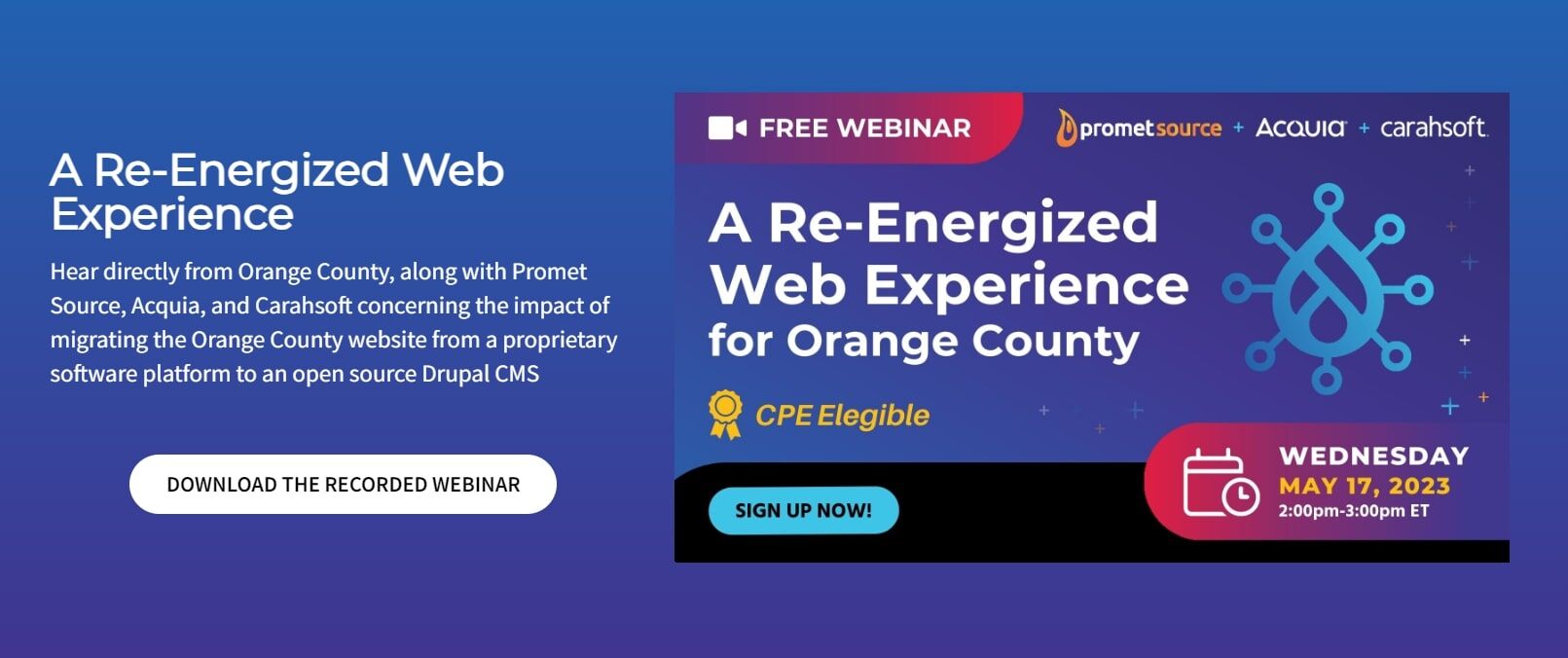
While the ease of potential future migrations shouldn't be the primary factor in choosing your new local government CMS, it's an important consideration for long-term planning.
For a more detailed guide on CMS migration processes for government entities, see John Lutz’s article on CMS Migration for State and Local Government.
This analysis will help you determine if an open-source CMS aligns with your goals and resources, setting the stage for a successful transition if you decide to move forward.
Our CMS recommendations: Provus®Gov, WordPress, and Drupal
This section explores three CMS options that can address the needs of small to mid-sized cities and counties: Provus®Gov—the government-specific version of Provus® our team built, WordPress, and Drupal. Each platform offers distinct advantages for you to consider.
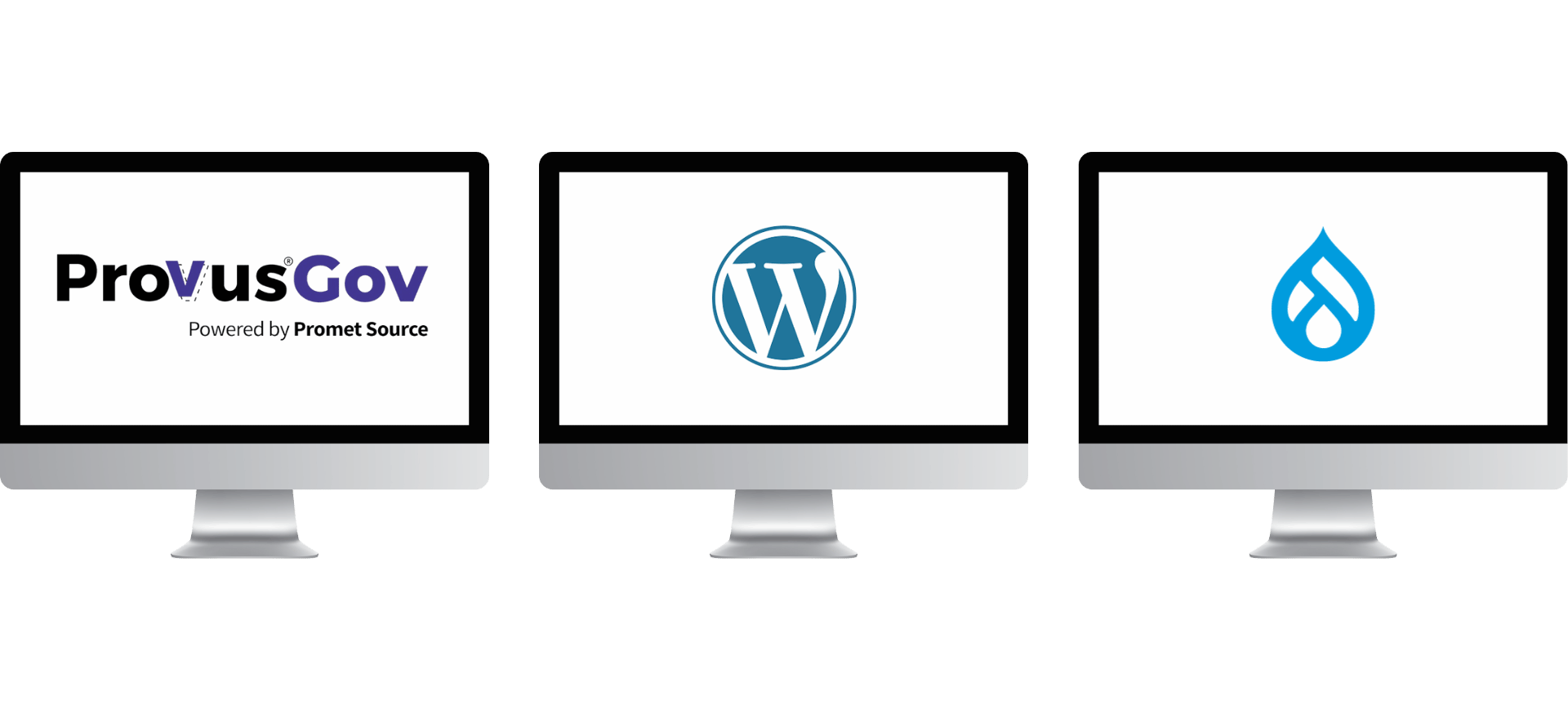
In case you’re wondering why we’re evaluating Drupal here when it’s more popular with larger government entities, we believe this to be more of a marketing and perception issue:
The lower adoption rates among smaller entities may be more reflective of marketing approaches and perceptions rather than Drupal's actual suitability to smaller entities. More often than not, the narrative around Drupal—whether from agencies or individual developers—emphasizes its capacity for large, complex sites, potentially discouraging smaller entities from considering it as an option.
—Drupal Usage in Government: A Data-Driven Study of CMS Adoption Patterns
I also discussed the common misconceptions that persist surrounding open-source (and Drupal for that matter) in my article on open-source vs proprietary CMS.
Let’s move on.
Provus®Gov for a tailored, user-friendly government website solution
As I mentioned earlier, Provus®Gov is based off Provus®, the open-source Drupal distribution our team built. We poured our 20 years of experience into this product and decided to create a version specific to government.
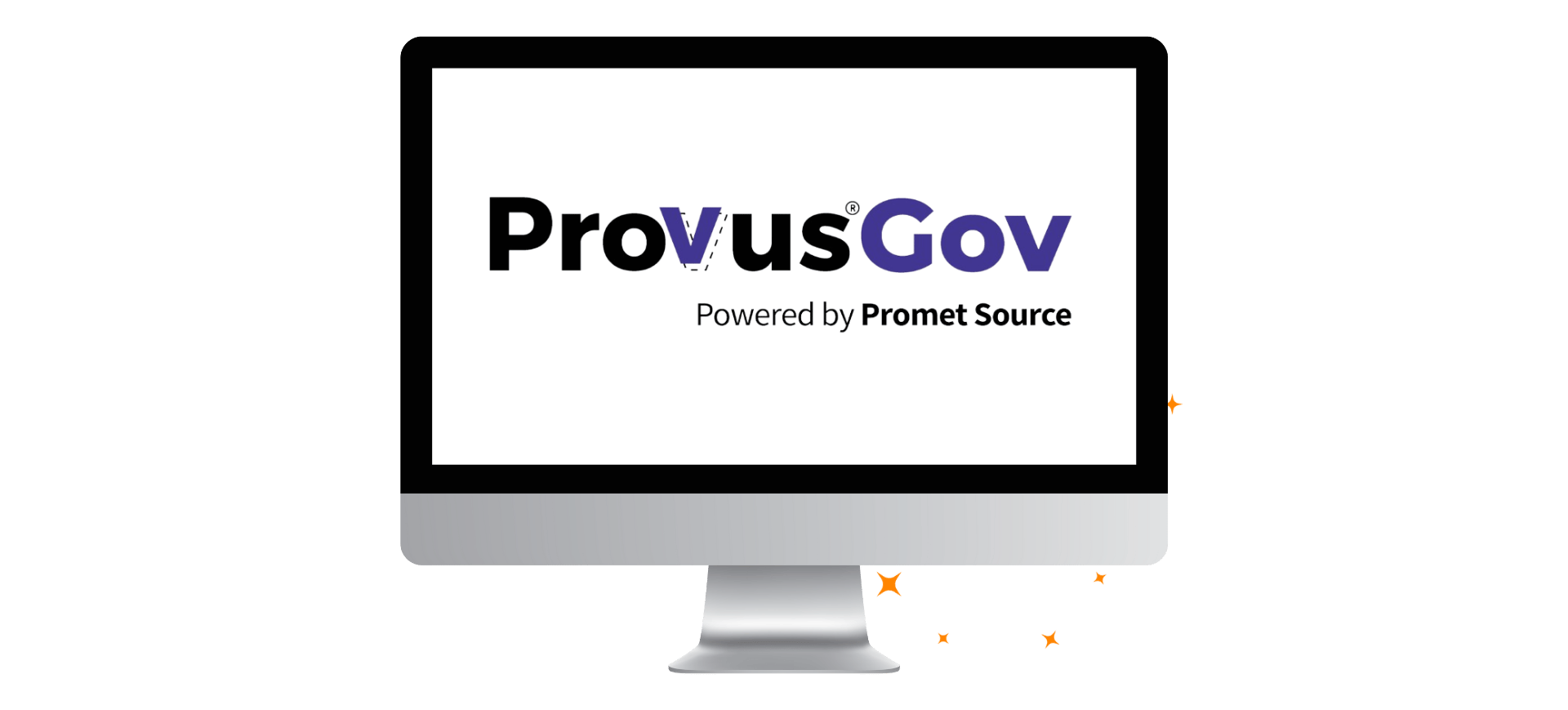
- Government-specific features
- Pre-built components: Ready-to-use elements like event calendars and document centers.
- Compliance tools: Built-in features to ensure adherence to government regulations.
- Citizen engagement features: Tools for surveys, forms, and community feedback.
- Hybrid CMS approach
- WordPress-like ease: Intuitive content management inspired by WordPress simplicity.
- Drupal-powered backend: Leverages Drupal's robust architecture for scalability and security.
- Best of both worlds: Combines user-friendliness with enterprise-level capabilities.
- Pre-configured for quick deployment
- Government templates: Design templates tailored for various government departments.
- Rapid setup: Streamlined installation process for faster website launches.
- Customization options: Easy-to-use tools for adapting pre-built components.
- Non-technical user empowerment
- Drag-and-drop interface: Visual page builder for creating layouts without coding.
- In-context editing: Make changes directly on the front end of the website.
- Role-Based Access: Granular permissions to control content management tasks.
- Component-based design system
- Consistent branding: Ensures visual consistency across all pages and sites.
- Reusable elements: Library of pre-designed, government-specific components.
- Flexible layouts: Easily create and modify page layouts to suit specific needs.
- Built-in accessibility compliance
- WCAG 2.0 AA compliant: Meets accessibility standards out-of-the-box.
- Accessibility checker: Built-in tools to maintain compliance during content creation.
- Regular updates: Ongoing improvements to meet evolving accessibility standards.
- AI-powered enhancements
- Promethia chatbot: AI-driven chatbot for improved citizen engagement and support.
- Metatag AI: Automated generation of SEO-friendly metadata for content.
- Open-source foundation
- No vendor lock-in: Freedom to modify and extend the platform as needed.
- Community support: Access to Drupal's vast community resources and modules.
- Transparent development: Open development process with regular community input.
- Scalability and future-proofing
- Adaptable architecture: Grows with your organization's needs without platform changes.
- Regular updates: Continuous improvements based on government sector needs.
- Integration capabilities: Easily connect with other government systems and services.
Want to see how Provus®Gov can make your site better? Request a free demo →
WordPress for an accessible, customizable, and cost-effective CMS
WordPress is a CMS juggernaut for a reason. In fact, a Themeisle study found that 63.1% of websites with a known CMS use WordPress.
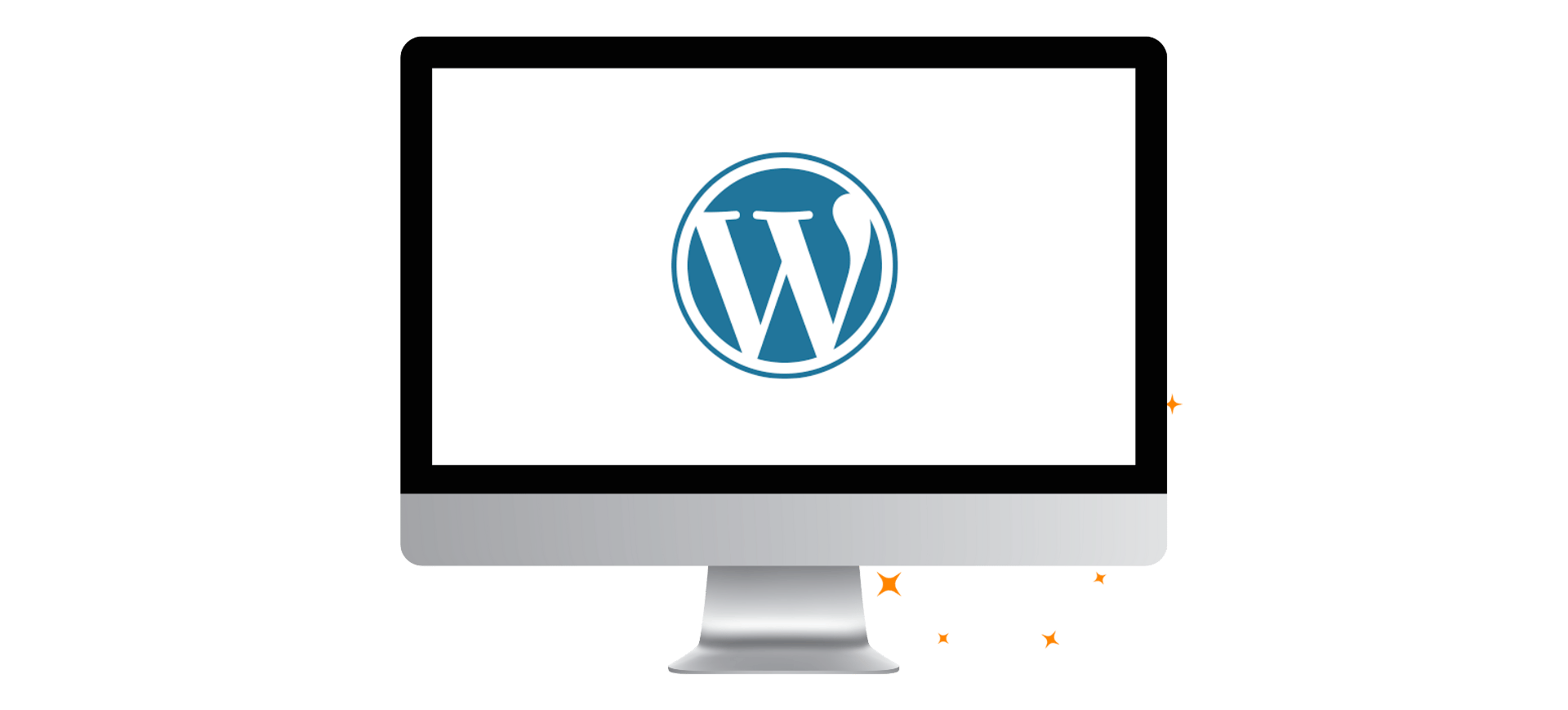
- User-friendly interface
- Intuitive dashboard: Easy-to-navigate dashboard simplifies content creation and management.
- WYSIWYG editor: Visual editor allows formatting without HTML knowledge.
- Drag-and-drop builders: Tools like Elementor enable quick visual layout adjustments.
- Extensive plugin ecosystem
- 59,000 free plugins: Vast array of plugins for adding features from e-commerce to social media integration.
- Seamless integration: Many plugins offer compatibility with third-party services.
- Automated updates: Regular plugin updates ensure security and functionality.
- Cost-effective solution
- Low initial costs: Free to use with optional premium themes and plugins.
- Affordable maintenance: Low ongoing costs for hosting and updates.
- Open source: No licensing fees, with community-driven development.
- Large supportive community
- Active forums: Extensive online forums for advice and solutions.
- Regular updates: Frequent updates from developers keep the platform secure.
- Educational resources: Abundant tutorials, courses, and documentation available.
- Customizable themes
- Wide selection: Thousands of free and premium themes cater to various design preferences.
- Quick development: Pre-built designs speed up the development process.
- Theme customizers: Tools allow easy modifications without coding.
- Mobile-responsive design
- Built-In responsiveness: Many themes are designed for compatibility across devices.
- Mobile previews: Ability to preview site appearance on mobile devices.
- Responsive plugins: Plugins that support and enhance mobile functionality.
- SEO-friendly features
- Built-in SEO tools: Basic SEO capabilities like customizable permalinks.
- SEO plugins: Powerful plugins like Yoast SEO help optimize content.
- Clean code: Adheres to best coding practices, improving search engine visibility.
- Potential limitations
- Scalability concerns: Some run into issues when building large or complex sites, although this could potentially be an issue with how the team decides to build the website.
- Plugin conflicts: Potential conflicts between plugins can affect performance.
- Security risks: Popular platform can be a target for hackers; regular updates necessary.
Related: Drupal vs. WordPress: Key Strengths of the Top CMSs →
Drupal for a robust, scalable, and secure enterprise-level CMS
It's no secret—we are huge supporters of Drupal and the Drupal community, and for good reason. Drupal is widely used by some of the most important Federal agencies we have, such as the U.S. Department of Labor, NIST, and Homeland Security.
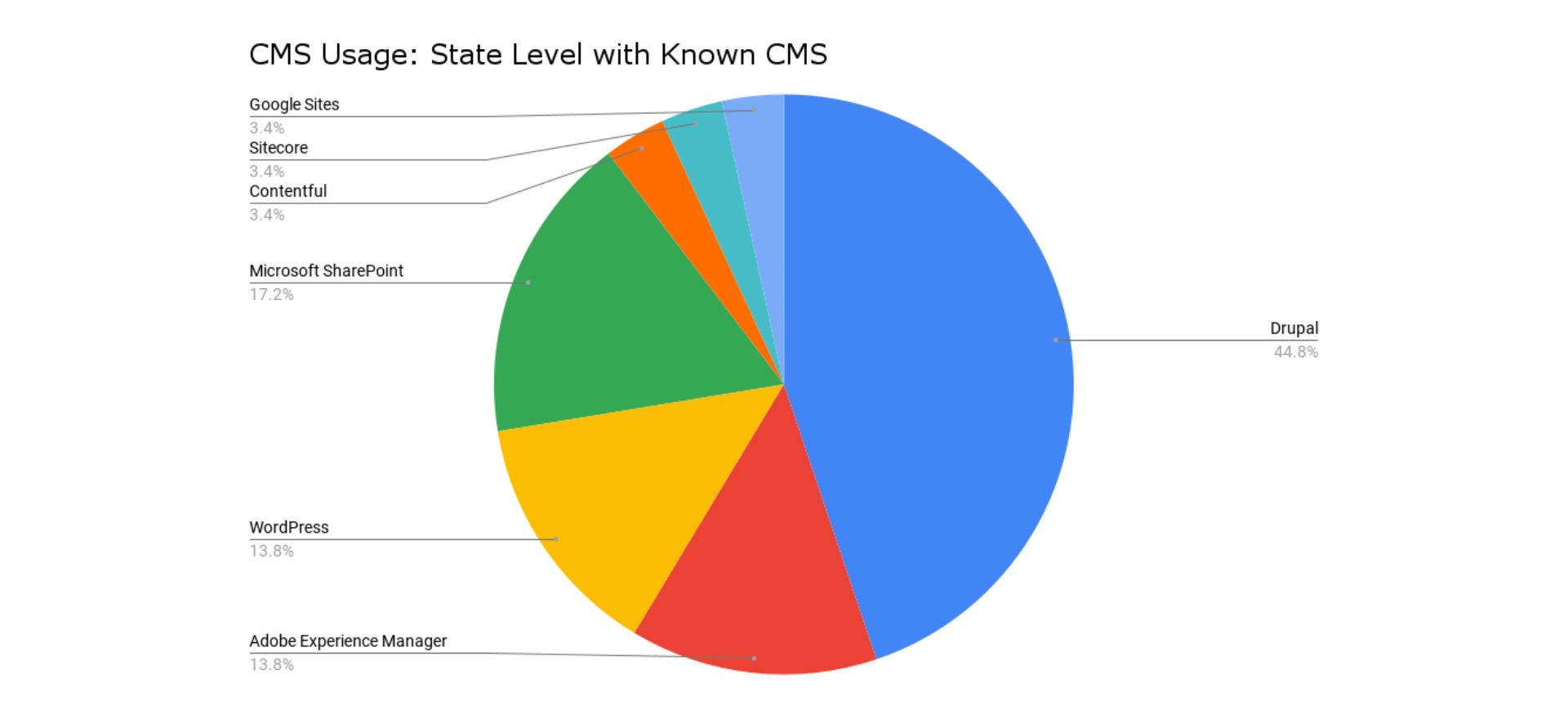
Not to mention a whopping 44.8% of our States with a known CMS.
Related: 9 Ways Drupal Keeps Government Sites Ahead of the Curve →

- Advanced security features
- Robust access control: Granular user permissions and role-based access control.
- Regular security updates: Dedicated security team provides timely patches and updates.
- Encryption support: Built-in tools for data encryption and secure connections.
- Highly scalable architecture
- Caching mechanisms: Advanced caching improves performance for high-traffic sites.
- Database optimization: Efficient database queries handle large volumes of content.
- Load balancing: Supports distributed architectures for handling traffic spikes.
- Flexible content structuring
- Custom content types: Create and manage diverse content structures.
- Taxonomies: Powerful categorization system for organizing complex content.
- Views: Flexible content display options without custom coding.
- Enterprise-level features
- Workflow management: Create custom editorial workflows for content approval.
- Multisite capabilities: Manage multiple sites from a single Drupal installation.
- API-first architecture: Facilitates headless CMS setups and integrations.
- Strong accessibility compliance
- WCAG standards: Core commitment to Web Content Accessibility Guidelines.
- Accessible themes: Many Drupal themes are designed with accessibility in mind.
- Accessibility modules: Additional modules are available for enhancing accessibility.
- Multilingual capabilities
- Core language support: Built-in tools for managing multilingual content.
- Translation interface: User-friendly interface for content translation.
- Language detection: Automatic language detection and content serving.
- Customizable admin experience
- Admin themes: Customizable admin interfaces for improved usability.
- Dashboard customization: Tailor the admin dashboard to specific roles and needs.
- Contextual links: Quick access to edit options directly from the front-end.
- Developer-friendly platform
- Twig templating: Flexible and secure templating system.
- Configuration management: Tools for managing and deploying configuration changes.
- Composer integration: Streamlined dependency management and core updates.
- Potential challenges
- Steeper learning curve: Requires more technical expertise to fully leverage.
- Development complexity: Advanced features may require more development time.
- Resource intensive: May require more server resources compared to simpler CMS options.
And if you're currently on Revize or Adobe Experience Manager, we have comparison articles for you.
Deciding on the best content management system
As you evaluate your CMS options, use this comprehensive checklist to ensure you've considered all crucial factors. This will help you make an informed decision that aligns with your organization's needs and long-term goals.
Summary of the key decision points:
- Current system assessment
- Technical requirements
- Content management needs
- User experience and accessibility
- Security and compliance
- Scalability and future-proofing
- Cost considerations
- Support and community
I’m adding here a printable CMS evaluation checklist you can download and work through. This is based on everything we’ve talked about so far in this article.
Download: CMS Evaluation Checklist →
While this checklist covers key areas, your specific needs may require additional considerations. I added notes sections after each item so you can add any extra items or findings you may have.
Get expert support from Promet Source
At Promet Source, we've successfully completed hundreds of website migrations for State and local government entities. Our extensive experience means we can fully support you with transitioning to open-source platforms.
- Government expertise: Deep understanding of public sector needs and compliance.
- Proven success: Hundreds of migrations for cities, counties, and State agencies with improved efficiency and citizen engagement.
- Comprehensive support: End-to-end services, from assessment to post-launch support, with custom migration scripts for data integrity and minimal downtime.
- Open-source specialists: Extensive experience with Drupal and WordPress, active in open-source communities, and creators of Provus®Gov.
- Accessibility and compliance: Ensuring ADA compliance, WCAG standards, and maintaining SEO value during migration.
- Training and support: Customized staff training, comprehensive documentation, and flexible ongoing support plans with proactive monitoring.
Our team is ready to support you every step of the way, from initial planning to post-launch optimization. We are committed to delivering solutions that enhance your digital presence while serving your community better.
Ready to start your journey to a more flexible, secure, and citizen-friendly website? Contact our government CMS migration experts today for a free consultation and let us show you how we can transform your online presence.
Other Insights & Resources you may like
Get our newsletter
Get weekly Drupal and AI technology advancement news, pro tips, ideas, insights, and more.



